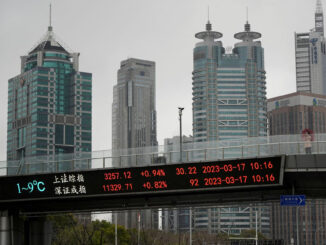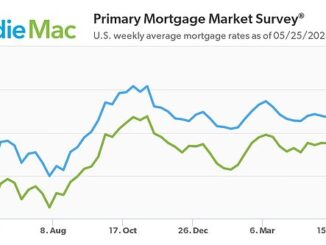
Feb 27 (Reuters) – A look at the day ahead in U.S. and global markets from Mike Dolan
As March hoves into view with another intense bout of inflation and interest rate anxiety, markets are also on edge over how China’s relationship with Russia will unfold next week.
On Sunday, the United States warned China of serious consequences if it provided arms to support Russia’s invasion of Ukraine, heightening tensions between the top two economies.
“If it goes down that road it will come at real costs to China,” White House national security adviser Jake Sullivan told CNN.
China said on Monday it sought dialogue and peace for Ukraine despite the U.S. warnings. Russian President Vladimir Putin last week hailed ties with Beijing and indicated that his Chinese counterpart Xi Jinping would visit Moscow in March – with U.S. officials indicating that could be as soon as next week.
China also publicly complained on Monday about U.S. military aircraft flying through the Taiwan Strait.
The tense geopolitical backdrop to the anniversary of the Ukraine invasion comes in tandem with what looks like a re-acceleration of the world economy and inflation.
After Friday’s stock market shakeout on the latest surprisingly hot U.S. inflation reading and renewed U.S. interest rate worries, Shanghai markets underperformed on Monday and the yuan hit its lowest for the year against a resurgent dollar.
JPMorgan is proposing a new Asia credit index with slashed China weighting in parallel to its existing $85 billion Asia credit index, two sources said, amid growing geopolitical tensions and dimming appetite for Chinese property bonds.
European stocks and U.S. futures recaptured some ground on Monday but the DXY dollar index briefly hit its highest since Jan. 6.
The new U.S. interest rate horizon remains jarring, however. The implied Federal funds target rate is now 5.42% by July – some 75 basis points higher than at present – and futures markets pencil in rates as high as 5.30% at yearend.
At 4.85%, two year Treasury yields hit their highest intra-day level since early November.
British bank NatWest said it now expects the Fed to raise rates by 50 bps at its March meeting and joined others in expecting 25 bp hikes at May and June meetings too, taking the “terminal rate” to 5.75% – half a point higher than it previously thought.
The dollar also hit its highest for the year against Japan’s yen.
Incoming Bank of Japan Governor Kazuo Ueda said he had ideas on how the central bank could exit its massive stimulus, but made clear such a shift to tighter policy was not imminent.
“It’s not that I have no ideas on how to tweak the BOJ’s current policy. But the desirable tweak will vary depending on economic changes at the time,” Ueda said.
Sterling perked up slightly as UK Prime Minister Rishi Sunak and European Commission President Ursula von der Leyen prepared to announce a new Brexit deal for Northern Ireland on Monday if the two can agree final details during lunchtime talks.
According to JPMorgan, the Bank of England will likely raise rates by a further 25 bps in June as more tightening may be needed to tame sticky inflation. The 25 bps hike, following similar sized moves in March and May, will take the BoE terminal rate to 4.75%, it said.
Meanwhile, Warren Buffett’s Berkshire Hathaway (BRKa.N) on Saturday reported its highest-ever annual operating profit, even as foreign currency losses and rising interest rates contributed to lower earnings in the fourth quarter.
“I have yet to see a time when it made sense to make a long-term bet against America,” Buffett said in an upbeat letter.
Key developments that may provide direction to U.S. markets later on Monday:
* U.S. Jan durable goods orders, Jan pending home sales, Feb Dallas Fed manufacturing survey.
* Federal Reserve Board Governor Philip Jefferson. European Central Bank board member Philip Lane
* U.S. corp earnings: Target, Occidental Petroleum
Source: www.reuters.com



